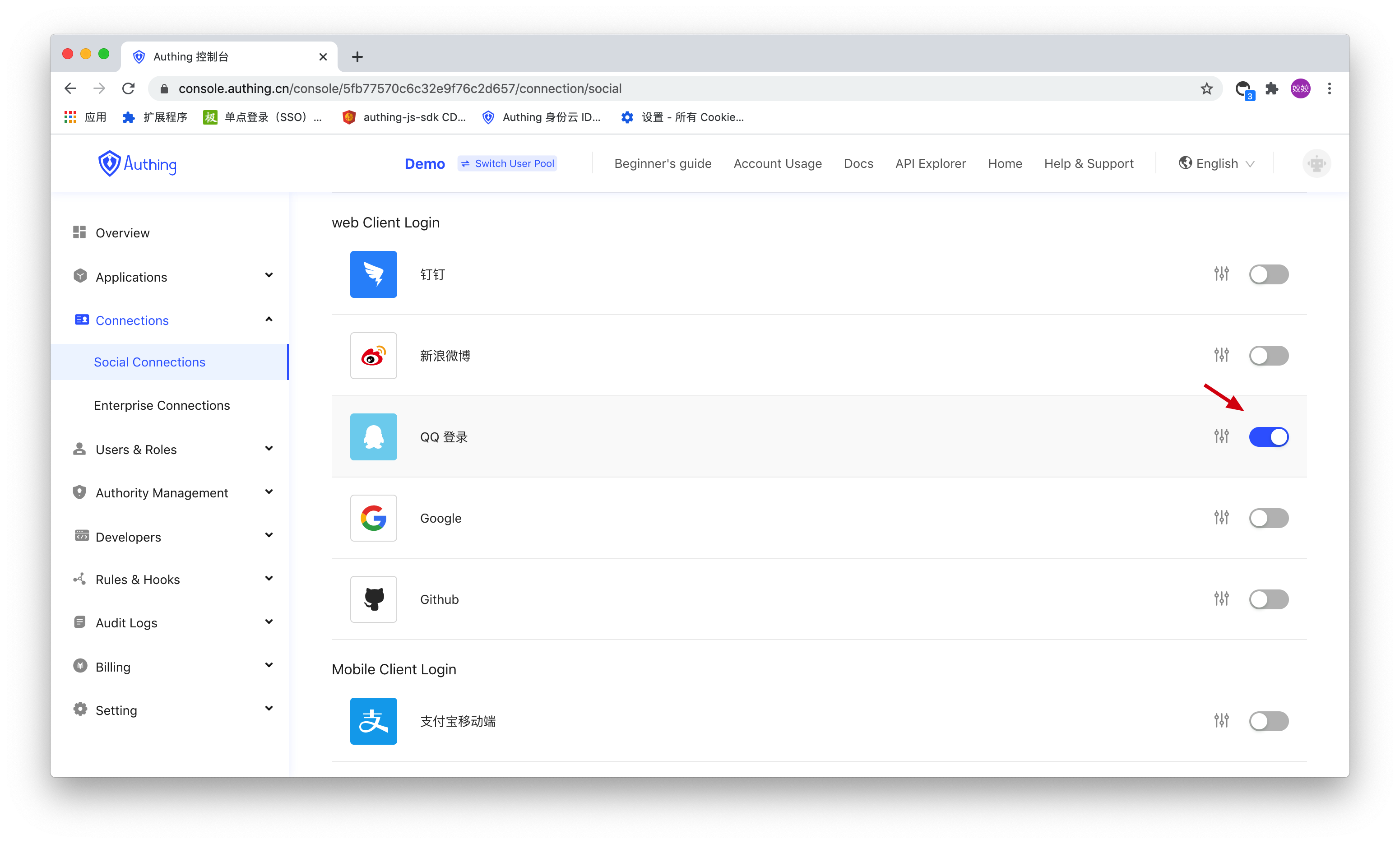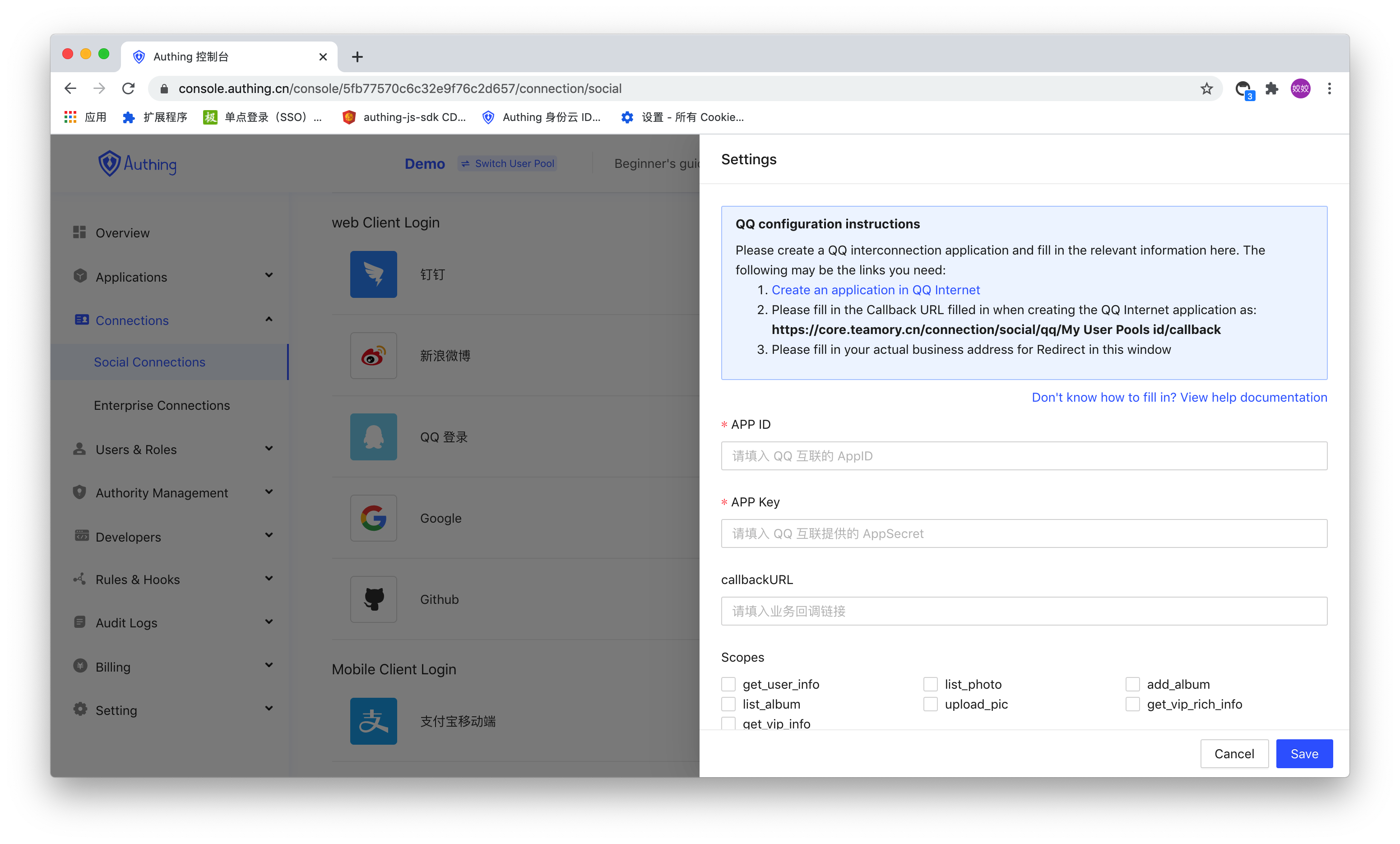# Prerequisites
You need to prepare the following in total:
- Create an Authing Account
- Apply for a QQ web application
- Fill in the DingTalk web application information in the Authing console
# Apply for Dingding web application
Go to QQ Internet Center (opens new window) to register a web application according to the official guidelines, and set the callback link to:
https://core.authing.cn/connection/social/qq/:userPoolId/callback
Please replace
:userPoolIdwith your user pool ID
# Fill in the QQ web application information in the Authing console
After creating the Weibo web application, please follow the instructions below to find the QQ social login configuration in the Authing console:

Here you need to fill in your Dingding web application information:
- Client ID
- Client Secret
- Redirect: This is your business callback domain name, which is different from the callback link configured in the QQ web application. For example, your website domain name is https://example.com and the url for processing Authing callback requests is /auth/qq/callback, then you should fill in as
https://example.com/auth/qq/callback. If you need to configure the callback link separately in OIDC or OAuth applications, the address here can be filled in: #. - Scopes (optional): By default, Authing will only request authorization from users for basic user information (such as avatars, nicknames, etc.). If you need more advanced permissions, you can check the corresponding options. For details, please see Configure Login Authorization Scopes.

After configuration, please click「OK」to save the information.
# Next
After the configuration is complete, you can start to formally integrate social login into your system. Authing social login supports four access methods: using JavaScrit SDK, using Guard for Web login form component, using Authing online login page As with manually calling the social login interface, for the applicable scenarios and advantages and disadvantages of each method, please refer to: Social Login Access Guide.